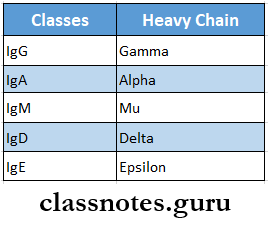Allergic And Immunological Diseases Of Oral Cavity Important Notes
- Recurrent Aphthous Stomatitis
- Recurrent Aphthous Stomatitis is a common disease characterized by the development of painful recurring solitary or multiple ulceration of the oral mucosa
- Recurrent Aphthous stomatitis Etiology
- Bacteria – alpha-hemolytic streptococci, strep. Sanguis
- Genetic factors
- Immunologic abnormality
- Iron, vitamin B12, folic acid deficiency
- Allergic factors
- Trauma
- Endocrine factors
- Psychic
- Systemic disease – Behcet’s syndrome, cyclic neutropenia, HIV infection
- Recurrent Aphthous Stomatitis Classification
- Recurrent aphthous minor
- Recurrent aphthous major
- Recurrent Herpetiform ulceration
- Recurrent ulcers associated with Behcet’s syndrome
- Recurrent aphthous stomatitis Clinical features
- Presence of small nodules
- Burning sensation
- Erythema
- General edema of the oral cavity
- Paraesthesia
- Malaise
- Low-grade fever
- Local lymphadenopathy
- Vesicle-like lesions containing mucus
- Ulcer-presenting features
- Single/multiple erosions
- Covered by grey membrane
- Has necrotic center with clearly defined raised margins surrounded by erythematous halo
- Painful
- Interferes with eating and speech
- f.No -1-100
- Size – 2-3 mm to 10 mm in diameter
Allergic And Immunological Diseases Of Oral Cavity Short Question And Answers
Question 1. Contact Stomatitis
Answer:
Contact Stomatitis
- Contact stomatitis is an allergic reaction due to local application or contact with certain drugs, foods, restorative materials, gentrifies, etc.
- Contact Stomatitis can be acute or chronic
Contact Stomatitis Cause:
- Antigen-antibody reaction at the site of contact
Contact Stomatitis Treatment:
- In mild cases
- Removal of suspected allergens
- Antihistamines along with topical anesthetic agents
- In chronic cases
- Removal of the antigenic source
- Application of topical corticosteroids like fluocinonide or dexamethasone elixir
Question 2. Histamines
Answer:
Histamines
- Histamine is an amine of the tissues present in all the tissues of the body in an inactive or bound form
- Histamine is liberated as active histamine during
- Injury to tissues
- Antigen-antibody reaction
- Histamine is destructed by antihistaminic drugs
Contact Stomatitis Actions:
- Vasodilatation
- Increases vascular permeability
- Causes itching and pain
- Constricts the smooth muscles of the bronchi
Question 3. Immunoglobulin
Answer:
Immunoglobulin
Immunoglobulin is defined as a protein of animal origin endowed with known antibody activity
Immunoglobulin Synthesis:
- Immunoglobulin Synthesis are synthesized by plasma cells and lymphocytes
Read And Learn More: Oral Pathology Questions and Answers
Immunoglobulin Structure: Immunoglobulin consists of
- Two heavy chains
- Two light chains
- Variable mg ion Is present at the amino terminus while constant region is present at the carboxy-terminal
- Rased on heavy chains, immunoglobulins are deed filed Into 5 classes
- Light chains In all classes are Kappa and Lambda

Question 4. Anitschkow cells
Answer:
Anitschkow Cells
- Wood and his associates have described characteristic changes In the nuclei of epithelial cells taking cytological smears from around recurrent aphlhousulers
- These are referred to as Anitschkow cells
- Anitschkow Cells consists of cells with elongated nuclei containing a linear bar of chromatin with radiating processes of chromatin extending toward the nuclear membrane
- Its Ultrastructure has been described by Haley and his associates
- They found that the nuclear chromatin was made up of pleomorphic masses forming an irregular band along the long axis of the nucleus
- Anitschkow cells are also found in patients with
- Sickle cell disease
- Megaloblastic anemia
- Iron deficiency anemia
- In children receiving chemotherapy for cancer
- Normal persons
Question 5. Delayed Hypersensitivity
Answer:
Delayed Hypersensitivity
- Delayed hypersensitivity reaction is mediated by sensitized T-lymphocytes
- Delayed hypersensitivity cannot be passively transferred by serum but can be transferred by lymphocytes or the transfer factor
Delayed Hypersensitivity Pathogenesis:

Delayed Hypersensitivity Types:
- Tuberculin type
- Contact dermatitis type
Question 6. Antischkow Cell
Answer:
Antischkow Cell
- Present in recurrent aphthous ulcer
- Characteristic features are
- Elongated nuclei
- Linear bar of chromatin
- Few radiating processes extend toward the nuclear membrane
Allergic And Immunological Diseases Of Oral Cavity Viva Voce
- Anitschkow cells are characteristic cells of recurrent aphthous ulcer
- Behcet’s syndrome consists of oral and genital ulceration, ocular lesions, and skin lesions
- Reiter’s syndrome is associated with urethritis, Balanitis, conjunctivitis, and mucocutaneous lesions
- Sarcoidosis is a multisystem granulomatous disease of unknown origin characterized by the formation of uniform, discrete, compact, noncaseating epithelioid granuloma
- Angioedema is a diffuse oedematous swelling of the skin, mucosa, and submucosal connective tissue
- The allergic reaction of the skin is called dermatitis medicamentosa
- Contact stomatitis is a type of reaction in which a lesion of the skin or mucous membrane occurs at a localized site after repeated contact with the causative agent
- Wegener’s granulomatosis is a disease with urn known etiology that involves the vascular, renal, and respiratory systems.
